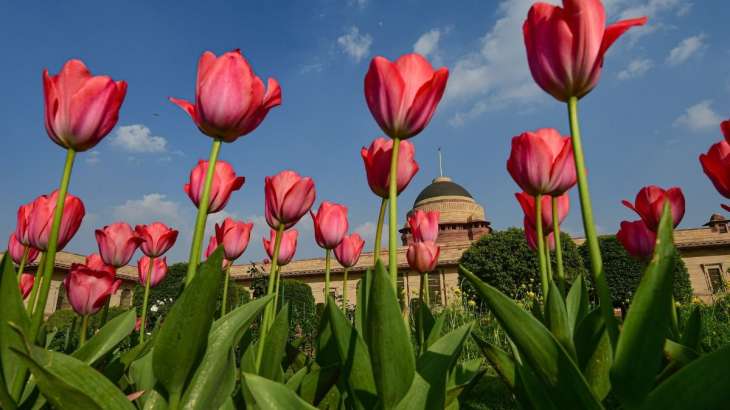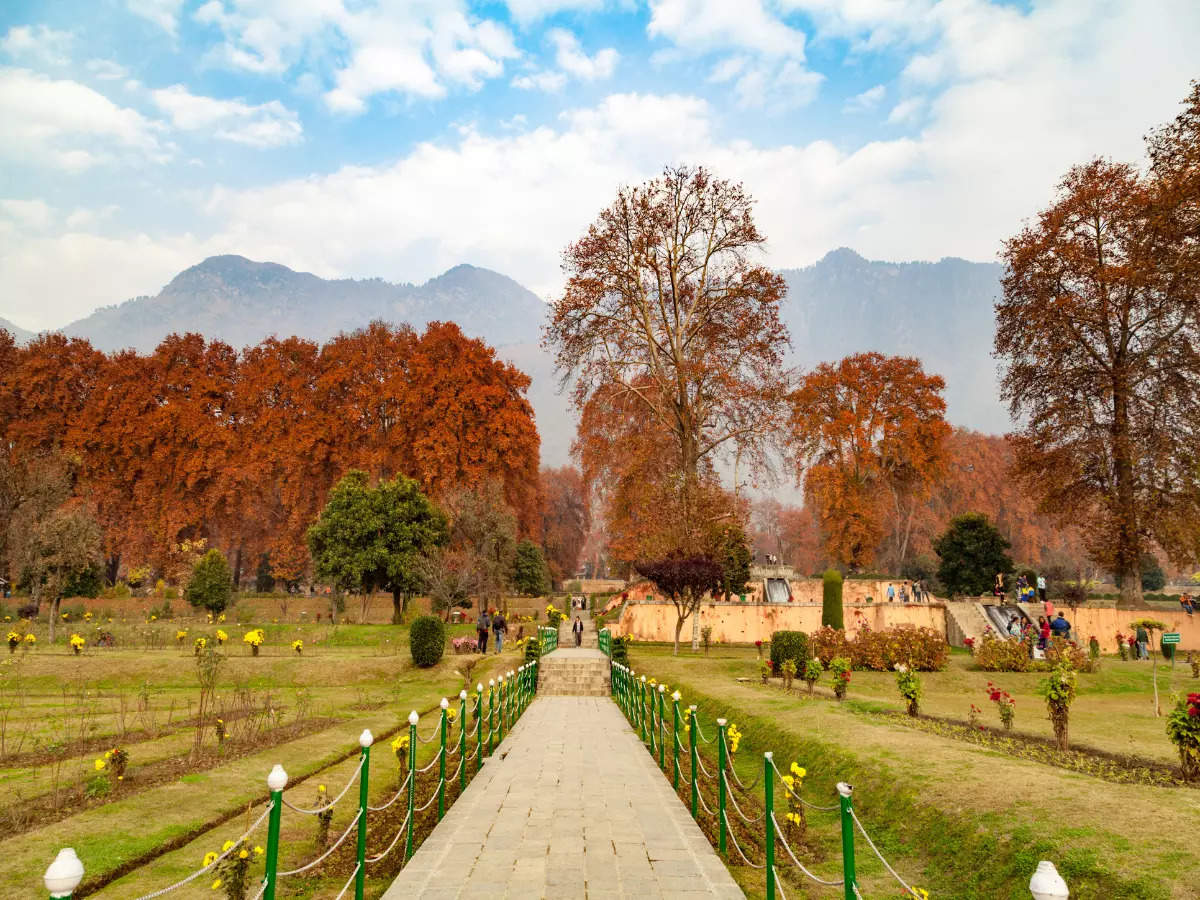Mughal Gardens in Kashmir
Mughal Gardens in Kashmir are one of the most magnificent gardens in India, built during the Mughal era. These gardens are now on UNESCO’s tentative list of World Heritage sites. The gardens are located in the heart of Srinagar, the capital city of Jammu and Kashmir, and attract visitors from all over the world. These gardens have a rich history and architectural significance, making them an important cultural asset for the region.

The Mughal Gardens in Kashmir comprise a series of gardens built by the Mughal emperors during their reign. The gardens are characterized by their symmetrical design and layout, reflecting the Mughal’s love for geometry and order. The gardens are also known for their water features, including fountains, cascades, and water channels, which add to their beauty and serenity.
One of the most famous Mughal Gardens in Kashmir is the Shalimar Bagh. This garden was built by Emperor Jahangir in the 17th century and is considered one of the finest examples of Mughal architecture in the region. The garden is spread over an area of 31 acres and is divided into three terraces, each with a unique layout and design. The garden is known for its chinar trees, fountains, and cascades, which create a serene and peaceful atmosphere.

Another famous Mughal Garden in Kashmir is the Nishat Bagh. This garden was built by Asif Khan, the brother-in-law of Emperor Jahangir, in the early 17th century. The garden is spread over an area of 46 acres and is known for its beautiful flowerbeds, fountains, and water channels. The garden is also home to several pavilions, including the Nishat Pavilion, which offers a stunning view of the Dal Lake.
The third famous Mughal Garden in Kashmir is the Chashme Shahi. This garden was built in the early 17th century by Emperor Shah Jahan and is known for its natural spring, which gives the garden its name. The garden is spread over an area of 5 acres and is characterized by its terraced layout and water features. The garden is also home to a small shrine, which is dedicated to the Sufi saint, Sheikh Noor-ud-Din.
The Mughal Gardens in Kashmir are not only known for their beauty but also for their historical significance. These gardens are a testament to the Mughal’s love for nature and their passion for creating beautiful landscapes. The gardens also reflect the Mughal’s cultural and architectural influences, which have had a profound impact on the region’s art and architecture.
The Mughal Gardens in Kashmir have also played an important role in the region’s tourism industry. These gardens attract thousands of tourists every year, who come to experience the beauty and serenity of these magnificent gardens. The gardens are also an important source of employment for the local population, as they provide opportunities for tourism-related businesses, such as hotels, restaurants, and souvenir shops.
The inclusion of the Mughal Gardens in Kashmir on UNESCO’s tentative list of World Heritage sites is a significant recognition of their cultural and historical significance. The gardens are now being considered for inclusion on the World Heritage List, which would give them international recognition and protection. The inclusion of these gardens on the list would also help to raise awareness about their importance and the need for their preservation.
However, the Mughal Gardens in Kashmir are not without their challenges. The gardens are facing several threats, including urbanization, pollution, and natural disasters. The region’s political instability has also had a negative impact on the gardens, as they have been neglected due to lack of funds and resources.
To preserve the Mughal Gardens in Kashmir, it is important to take concrete steps towards their conservation and management. This includes developing sustainable tourism practices that minimize the impact of visitors on the gardens, implementing effective waste management strategies, and improving the maintenance and upkeep of the gardens.
Efforts are also being made to promote community involvement in the conservation and management of the Mughal Gardens in Kashmir. This includes engaging local communities in the decision-making process and providing them with training and support to take on roles in the management and maintenance of the gardens.
The Mughal Gardens in Kashmir are not only important for their cultural and historical significance but also for their ecological value. The gardens are home to a diverse range of flora and fauna, including several rare and endangered species. The gardens also play an important role in regulating the local climate, providing a source of fresh air and water for the surrounding communities.
In conclusion, the Mughal Gardens in Kashmir are a valuable cultural and historical asset for the region and deserve recognition and protection. The inclusion of the gardens on UNESCO’s tentative list of World Heritage sites is a positive step towards their conservation and management. However, it is important to recognize and address the challenges facing the gardens and take effective measures to preserve their beauty and ecological value for future generations to enjoy.



